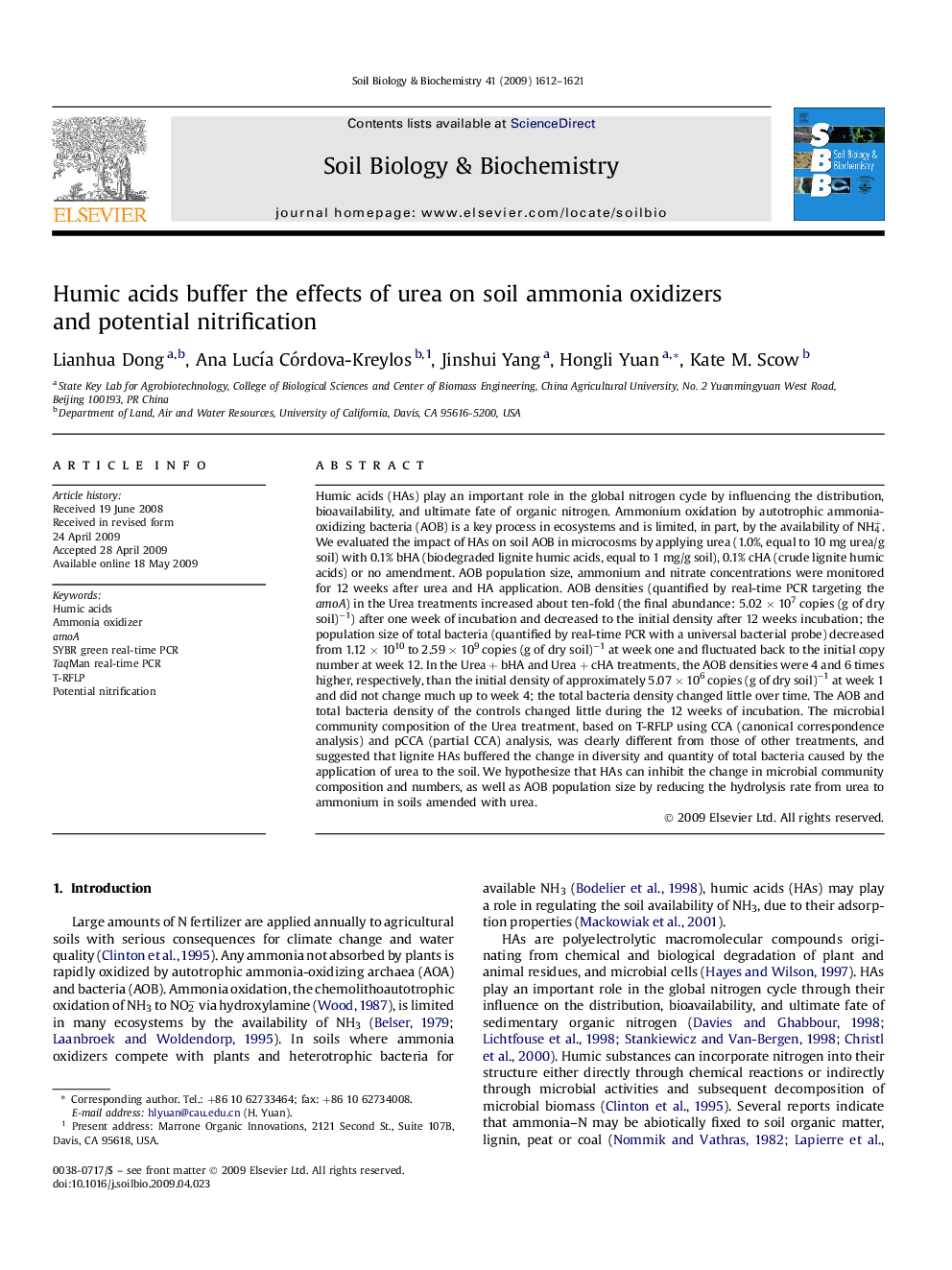| کد مقاله | کد نشریه | سال انتشار | مقاله انگلیسی | نسخه تمام متن |
|---|---|---|---|---|
| 2026377 | 1070028 | 2009 | 10 صفحه PDF | دانلود رایگان |

Humic acids (HAs) play an important role in the global nitrogen cycle by influencing the distribution, bioavailability, and ultimate fate of organic nitrogen. Ammonium oxidation by autotrophic ammonia-oxidizing bacteria (AOB) is a key process in ecosystems and is limited, in part, by the availability of NH4+. We evaluated the impact of HAs on soil AOB in microcosms by applying urea (1.0%, equal to 10 mg urea/g soil) with 0.1% bHA (biodegraded lignite humic acids, equal to 1 mg/g soil), 0.1% cHA (crude lignite humic acids) or no amendment. AOB population size, ammonium and nitrate concentrations were monitored for 12 weeks after urea and HA application. AOB densities (quantified by real-time PCR targeting the amoA) in the Urea treatments increased about ten-fold (the final abundance: 5.02 × 107 copies (g of dry soil)−1) after one week of incubation and decreased to the initial density after 12 weeks incubation; the population size of total bacteria (quantified by real-time PCR with a universal bacterial probe) decreased from 1.12 × 1010 to 2.59 × 109 copies (g of dry soil)−1 at week one and fluctuated back to the initial copy number at week 12. In the Urea + bHA and Urea + cHA treatments, the AOB densities were 4 and 6 times higher, respectively, than the initial density of approximately 5.07 × 106 copies (g of dry soil)−1 at week 1 and did not change much up to week 4; the total bacteria density changed little over time. The AOB and total bacteria density of the controls changed little during the 12 weeks of incubation. The microbial community composition of the Urea treatment, based on T-RFLP using CCA (canonical correspondence analysis) and pCCA (partial CCA) analysis, was clearly different from those of other treatments, and suggested that lignite HAs buffered the change in diversity and quantity of total bacteria caused by the application of urea to the soil. We hypothesize that HAs can inhibit the change in microbial community composition and numbers, as well as AOB population size by reducing the hydrolysis rate from urea to ammonium in soils amended with urea.
Journal: Soil Biology and Biochemistry - Volume 41, Issue 8, August 2009, Pages 1612–1621